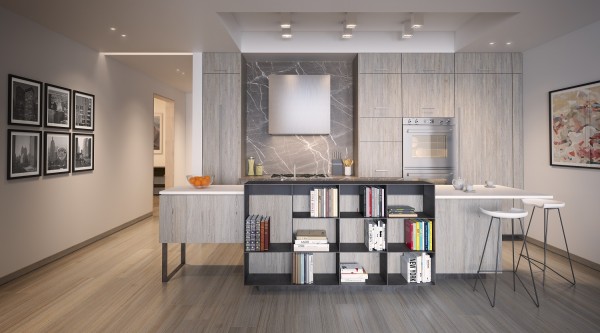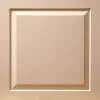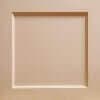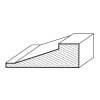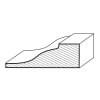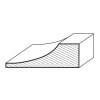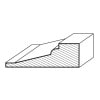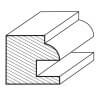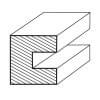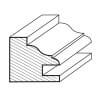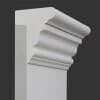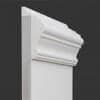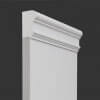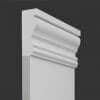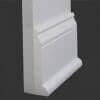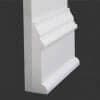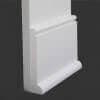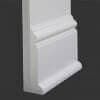The short answer is wainscoting styles are still in style! As our global culture evolves, certain elements of our past and even recent history are dropped and forgotten about as irrelevant to modern times. Some things, however, are simply unforgettable. Nowhere is this more apparent than in architecture, where we see features which were thought up thousands of years ago still in use today. Interior design has experienced this to the same degree, with many modern middle-class houses today looking remarkably similar to those upper-class houses of 18th century England. One feature which seems like it may never fade out of style is wainscoting, especially raised panel wainscoting, which may come as a surprise to some. Here are some reasons why the question is wainscoting in style today is a resounding yes!
The Practical Value of Wainscoting
The original use of raised panel wainscoting was purely practical, and aided against two common problems which were serious at the time. These were:
- Creating a secondary layer of insulation, especially on damp walls.
- Protecting the lower areas of the walls from damage from condensation as well as from scuff marks from furniture.
Humanity has since solved the insulation problem by filling the walls with cellulose, fiberglass, and mineral wool. Protecting the walls from scuff marks may still be a modern problem, although furniture makers have been more mindful of how their furnishings may potentially interact with their environment. This has resulted in furniture which often doesn’t have any sharp corners, and often uses cushioning for comfort.
Limited Practical Value in the Modern Age?
Considering the above, one could easily assume that wainscoting has next to no practical value in our modern lives. This couldn’t be further from the truth, as raised panel wainscoting can still offer a layer of protection on your walls which could be of benefit in these common contemporary situations:
- Protecting potentially expensive walls in your kids room – children are notorious for damaging or drawing on walls, wainscoting can be a cheaper alternative to repairing certain kinds of wall.
- Protecting the walls from chair scuff marks in a smaller dining room – rooms have changed size dramatically in recent years, and some modern dining rooms are smaller than they’ve ever been. Wainscoting can protect the walls from scuff marks when the chairs are likely to make contact with walls due to the tight proximity.
- Protecting the walls in particularly thin hallways – with the redistribution of space so common in modern renovations, we sometimes end up with thin or short hallways which are prone to wear and tear.
The Aesthetic Value of Wainscoting
As with many things, the practical value of wainscoting has transformed due to the root problems being solved. Nowadays most of the value of wainscoting is in its aesthetic appeal, as it can enhance certain architectural styles or reinforce the traditional nature of classic houses. There are several different styles of modern wainscoting which boast their own features.
Wainscoting Styles #1: Raised Panel Wainscoting
This is generally considered to be the classic style of wainscoting, and is usually what people visualize when they think of wainscoting. Raised panel wainscoting is defined by, as the name suggests, raised panels. This kind of wainscoting is considered the most formal style of wainscoting, and usually looks best in traditional application. This could either be throughout the house or simply in the rooms in which they were traditionally found: dining room, kitchen, hallways, and stairwells.
Wainscoting Styles #2: Flat Panel Wainscoting
Recessed panels as opposed to raised panels give a more contemporary look, especially in Art and Crafts and Mission styles. This kind of wainscoting is more suitable used sparingly in the house, to accentuate the stairway and hallways. It’s much more subtle than its counterparts, and can be unnecessary in rooms with furniture in front of the walls.
Wainscoting Styles #3: Beadboard Wainscoting
With its origins in 19th-century Victorian and cottage styles, beadboard wainscoting is considered a less formal style. It was predominantly used in informal rooms such as kitchens, bathrooms, and back hallways. Beadboard wainscoting can include a row of flat or raised panels to amplify elegance in certain spaces.
Wainscoting Styles #4: Board and Batten Wainscoting
This is a very specific style of wainscoting which only really suits Craftsman style houses. Board and batten utilizes flat panels and vertical battens, which emphasizes a Shaker-like simplicity. The battens were originally used to conceal the seams between individual boards, today they are usually installed over panels of hardwood-veneer plywood.
Is Wainscoting In Style Still? Yes
Whatever style of wainscoting you decide to install, know that you’re investing in an aesthetic will continue to be appreciated. Be sure to look into the best materials and best installers for the job. There are several D.I.Y. options available today which can damage the walls and may not fit as snug as custom-made wainscoting. Get in touch with us today to find out more about our wainscoting options, and how we can help.
